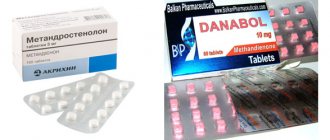It is impossible to distinguish methyl and ethyl alcohol by organoleptic indicators, but the consequences of taking these substances vary. Drinking methyl alcohol is dangerous, since even in small doses this toxic compound has severe negative effects on health and can sometimes lead to death.
Methyl alcohol
Methanol can end up in alcoholic beverages sold as alcoholic beverages due to the negligence of the manufacturer or due to malicious intent. Not only pure methanol is dangerous, but also liquids containing it.
Methyl and ethyl alcohol
Methanol is a colorless volatile substance characterized by a pungent wine-like odor and pungent taste. The liquid is poisonous.
The negative effects of methanol on the human body can most often be observed with accidental or targeted substitution of ethanol. All alcohols have the same organoleptic characteristics, and therefore it is very easy to confuse them. According to many sources, methanol poisoning most often occurs precisely because of its ingestion as part of a surrogate alcoholic drink. As a rule, these are cheap products from the underground. However, it cannot be ruled out that methanol will be sold under the guise of an elite alcoholic beverage, although such cases are very rare. More often, poisoning with this alcohol is the fate of people with severe chronic alcohol dependence.
In order not to lose human appearance
Since alcohol has a toxic effect on organs, a frequent drinker becomes ill with cirrhosis, hepatitis or peptic ulcer.
Scientists have determined that even after drinking 50 ml of vodka, the following happens to a person:
- reflexes decrease;
- the tempo of speech and articulation changes;
- pupils react poorly to light;
- the assessment of the real situation is distorted;
- emotional disturbances occur either in the form of unnatural euphoria or anger.
When a person relieves nervous tension with alcohol, he does not realize that, by extinguishing emotional tension, he is helping to consolidate the attitude toward more frequent drinking. It doesn’t matter what kind of alcohol they drink: ethyl or methyl. This happens because ethanol simultaneously affects the antipodes, which are located in the brain:
- on the punishment center, suppressing its activity;
- on the pleasure center, giving it a reason for euphoria.
Routes of entry into the human body
The effect of methanol on the human body is expressed in its ability to be quickly absorbed and excreted very slowly. The substance has a negative effect when ingested not only through ingestion, but also through contact with the skin, mucous membranes and respiratory tract.
With any of the methods described above, methanol has a detrimental effect on the retina of the eye. Damage to the optic nerve is noted, regardless of the form of intoxication, be it severe or mild. Scientists believe that this effect is achieved due to disruption of oxidative phosphorylation in the retina, inhibiting anaerobic glycolysis and, as a consequence, causing inhibition of ATP synthesis in cells. Formaldehyde formed in the body under the influence of methanol is to blame. Also, in all cases, irreversible changes in the liver are diagnosed.
Narrowing of visual fields after alcohol
The effect of alcohol on vision is more negative than many may imagine. Ethyl alcohol can lead to disruption of all visual functions: photosensitivity, binocularity, color perception. Peripheral vision also suffers under the influence of alcohol. Side objects are almost completely out of sight. Severe intoxication is accompanied by the effect of “tunnel vision” - a condition in which a person seems to see everything through a telescope. For this reason, drunk people often get injured and have accidents if they drive after drinking alcohol.
Contrast sensitivity of the eyes suffers no less than other vision functions.
Today, the connection between color blindness and alcoholism is being studied. Scientists from the University of Chile have concluded that alcoholics with advanced liver cirrhosis become colorblind.
Alcohol causes a deficiency in the liver of enzymes involved in the synthesis of light-sensitive retinal pigment, which is responsible for image contrast. Color blindness will not occur after drinking alcohol once. This can only happen due to its abuse.
The effect of methanol on the human body when ingested
Even 5 ml of this substance is enough to cause irreparable harm to health in the form of partial or complete loss of vision. A dose of 30-100 ml is considered lethal - it depends on the characteristics of a particular organism. A person dies within a maximum of 2 hours if 200 ml or more was taken. Death occurs due to respiratory arrest.
When methanol is swallowed, the substance is instantly absorbed; moreover, it accumulates in the body, which only worsens the overall picture. The liquid enters the gastrointestinal tract, damages the lining of the stomach and causes epithelial detachment.
When ingested, the effect of methanol on the human body is expressed by the following processes:
- The incoming substance begins to be processed by the liver, resulting in the formation of toxic substances such as formaldehyde and formic acid.
- Acute oxygen deficiency develops, and due to a violation of the acid-base balance, exogenous acidosis also appears.
- A sharp disruption of the central nervous system.
- Optic nerve dystrophy and retinal detachment.
- Suppression of the urinary system.
Invisible threat when ingesting methanol
At high dosages, the symptoms are pronounced. Methanol manifests itself quite quickly. With a low dosage, symptoms may appear only on 2-3 days. It takes at least a week to completely remove the substance from the body, and all this time methanol literally destroys internal organs. It is very important to carry out effective therapeutic measures in a timely manner to avoid death.
The effects of methanol on the human body: symptoms
The general signs of methanol poisoning are very similar to the symptoms of any other intoxication. This is expressed by headaches, dizziness, aches throughout the body, and abdominal cramps. Signs of alcohol intoxication appear: confusion, drowsiness, decreased sensitivity. In addition to general symptoms, it is important to pay attention to the following phenomena:
- photophobia, blurred vision, dilated pupils, depressed reaction to light;
- deep and ineffective breathing;
- cyanosis of the skin and mucous membranes;
- frequent but weak pulse, decreased blood pressure, and the occurrence of seizures.
When conducting a laboratory study, an increase in the level of hemoglobin and red blood cells in the blood, an increase in protein and hyaline casts in the urine are diagnosed.
In severe cases of poisoning, all of the above symptoms are more pronounced, eventually convulsions begin and death occurs.
A small molecule can do a lot of damage
The ethyl alcohol molecule is very small, so it easily penetrates everywhere: it is not difficult to be absorbed by it. Having permeated the cellular structures of the brain, it causes its liquefaction, and once in the stomach, it penetrates many systems and tissues of the body. Intoxication begins.
But all the body’s defenses come to the fight, complex biochemical processes are launched, as a result of which more than 90 percent of ethyl alcohol is oxidized under the influence of a certain oxidizing agent, called NAD for short. However, it is required not to combat the effects of alcohol, but to help in the production of testosterone. And if a man is too keen on drinking alcohol, it means he doesn’t have enough of this important hormone in his blood.
- impotence;
- destruction of the glandular part of the prostate gland with subsequent disruption of its function;
- feminization, that is, the effeminacy of the male body.
If a nursing mother takes 100 ml of vodka at once, the ethanol will freely enter the mammary glands, and during the next feeding the baby may begin to experience a state of severe alcoholic intoxication.
In a pregnant woman, after drinking alcohol, ethanol enters the blood through diffusion into the circulatory system of the developing embryo, and malformations begin to develop, which in the medical world are called alcoholic embryopathy syndrome. In this case, the answer to the question of which alcohol is dangerous—ethyl or methyl—is obvious.
First aid for methanol intoxication
If one of the symptoms appears, you should immediately contact a medical facility. First aid for the effect of methanol on the human body is to lavage the stomach - you need to artificially induce vomiting. After this, give the patient an alkaline drink, such as a soda solution, and then a laxative.
Ethylene (ethyl alcohol) is the antidote to methanol. After the procedures described above, you need to give the victim this “antidote” to drink at the rate of 0.5 ml per 1 kg of person’s weight, but only if there is 100% certainty that the poisoning occurred with methanol. Further assistance measures are carried out as prescribed by the doctor. 4-methylpyrazole and folic acid are also used as an antidote.
How to independently distinguish methyl from ethyl
The fact is that it is quite problematic to distinguish methyl alcohol from ethyl alcohol, since they have the same color, taste and smell . True, ethanol has a more pronounced aroma, while methyl alcohol is almost neutral. So if, after you sniff the liquid, it seems to you that the smell is unusual, it is better not to drink such alcohol. Therefore, you need to check your alcohol before drinking it. There are several basic ways to do this.
Method 1: Setting the liquid on fire
This is the simplest method to determine the quality of an alcoholic drink.
To do this, pour a small amount of liquid into a saucer and set the alcohol on fire. You can also take a cotton swab, soak it in alcohol and set it on fire. In this case, ethanol will burn with a blue flame, but methanol will burn with a green flame .
Although it must be taken into account that the reaction appears only if the methyl alcohol is pure, without various additives.
Method 2. Use potatoes
You can also check the quality of alcohol using potatoes. To do this, one medium-sized potato is peeled and then filled with alcohol. The amount of alcohol should be such that it completely covers the surface of the vegetable. Potatoes will not affect the taste of alcohol in any way, so they can be consumed if they pass the test.
If after a few hours it has not changed color, it means it was in food grade ethyl alcohol. It usually turns pink in methanol . In addition, the alcohol itself should not change color either. In natural alcohol, potato starch is not released, but in methanol, its particles enter the liquid. As a result, it becomes cloudy.
Method 3. Heating
To determine what kind of alcohol you have in front of you, you need to boil the liquid. To do this, pour approximately 200 ml of alcohol into a container that can be heated and place it on the fire. During the procedure, it is necessary to use a thermometer, since you need to measure at what temperature the boiling will begin. For ethanol - 80 degrees, and for methyl alcohol - only 60 .
Method 4. Reaction to potassium permanganate and soda
Potassium permanganate or potassium permanganate is an oxidizing agent that does not affect food alcohol. Therefore, when it is added to ethanol while heating the mixture, no reaction will occur. But if it is methanol, the liquid will start to fizz. This will create a strong odor of formaldehyde. After all, methanol is oxidized to formaldehyde, and ethanol is oxidized to acetaldehyde. Instead of potassium permanganate, you can use any other oxidizing agent.
Baking soda is also added to the liquid. After this, the solution is stirred. An insoluble yellow precipitate should appear in the edible alcohol, which occurs when ethanol and iodine react. But in methyl alcohol, soda will completely dissolve and the liquid will become transparent.
Method 5. Formaldehyde test
It is believed that the most reliable way to determine methanol in alcohol is a formaldehyde test . To perform it, take a thin copper wire and heat it on a fire. After this they are immersed in alcohol. Then you need to smell it: if there is a strong smell of formaldehyde, you should not drink such a drink. After all, ethanol, when reacting with copper wire, gives off the smell of apple cider vinegar.
Method 6. Lang's test
To check the quality of the alcohol consumed, you can conduct the so-called Lang test. The study can be carried out at home. For this:
- you need to take 50 ml of alcohol and pour it into a container that can be heated.;
- then 0.2 g of potassium permanganate is diluted in 2 ml of distilled water.
- the alcohol is heated to 18 degrees, and then a solution of potassium permanganate is poured into it. The resulting mixture must be mixed well.
Now you need to detect the time during which the color of the mixture changes its color from purple to pink. The longer this takes, the higher the quality of the alcohol being tested. A result in which the discoloration of the alcohol lasted for at least 10 minutes is considered normal .
The main thing is to buy alcoholic drinks only in trusted places. It is better to purchase it in stores, and not from people. In this case, the risk of accidental consumption of methanol is reduced significantly. Methyl alcohol is usually cheaper, although some sellers may pass it off as ethanol.
But it must be borne in mind that such methods are effective only if the alcohol contains a high concentration of methanol - more than half of the total volume. Therefore, if there is little methyl in alcohol or it contains impurities, then it is almost impossible to determine its presence in alcohol at home.
Therefore, you should not think that the experiments described above allow you to be 100% confident in the quality of the product you are using. Indeed, in alcoholic drinks, pure ethanol masks methanol additives. Therefore, if there are doubts about the quality and origin of an alcoholic drink, it is better not to drink it.
Pure methanol is a very dangerous poison for humans. Just 50 grams leads to blindness. The lethal concentration of poisonous alcohol in the body is above 100 grams . And even if the person remains alive, his vision is unlikely to return.
Treatment methods and consequences from the influence of methanol
Therapy is carried out in the neurology department. For 2-3 days, every 4 hours the patient is given an antidote intravenously in combination with glucose. Measures are being taken to restore the acid-base and water-salt balance in the body. For this purpose, droppers with glucose are placed, isotonic sodium chloride is administered, and abundant alkaline drinks are given. Diuretics may also be prescribed. Sometimes doctors resort to bloodletting, which is also an effective procedure for methanol intoxication.
In severe cases, hemodialysis, spinal punctures, and oxygen are used. But even if a person survives, the consequences can no longer be avoided - both with timely assistance and with mild poisoning. The harmful effect of methanol on the human body when inhaled or ingested occurs almost immediately. First of all, as already written above, the visual system suffers. Cases of development of blindness are common. Dysfunction of important systems of the human body occurs - the urinary and gastrointestinal tracts suffer. There is a negative impact on the functioning of the central nervous system, expressed by memory loss, headaches, and polyneuritis. All this leads to complete loss of ability to work, which, in turn, is the cause of disability.











